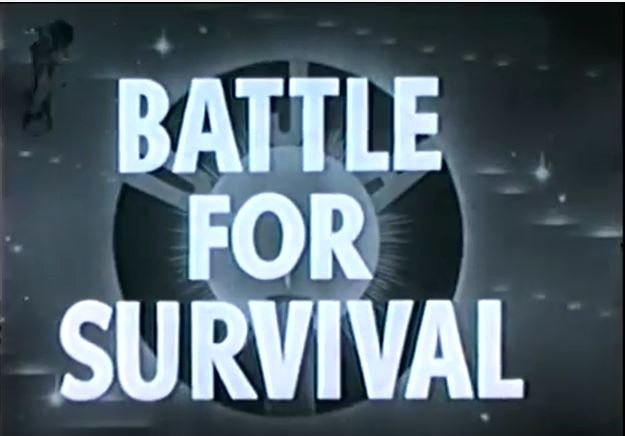Classical period (320–650 CE)
The Mahabharata, estimated to have been completed by the end of the fourth century, discusses the varna system in section 12.181, presenting two models. The first model describes varna as a colour-based system, through a character named Bhrigu, "Brahmins varna was white, Kshatriyas was red, Vaishyas was yellow, and the Shudras' black". This description is questioned by Bharadvaja who says that colors are seen among all the varnas, that desire, anger, fear, greed, grief, anxiety, hunger and toil prevails over all human beings, that bile and blood flow from all human bodies, so what distinguishes the varnas, he asks.
The Mahabharata then declares, "There is no distinction of varnas. This whole universe is
Brahman. It was created formerly by
Brahma, came to be classified by acts."
The epic then recites a behavioural model for varna, that those who were inclined to anger, pleasures and boldness attained the Kshatriya varna; those who were inclined to cattle rearing and living off the plough attained the Vaishya varna; those who were fond of violence, covetousness and impurity attained the Shudra varna. The Brahmin class is modeled in the epic as the archetype default state of man dedicated to truth, austerity and pure conduct.
In the Mahabharata and pre-medieval era Hindu texts, according to Hiltebeitel, "it is important to recognise, in theory, varna is nongenealogical. The four varnas are not lineages, but categories".
Late classical and early medieval period (650 to 1400 CE)
Scholars have tried to locate historical evidence for the existence and nature of varna and jati in documents and inscriptions of medieval India. Supporting evidence has been elusive, and contradictory evidence has emerged.
Varna is rarely mentioned in the extensive medieval era records of
Andhra Pradesh, for example. This has led Cynthia Talbot, a professor of History and Asian Studies, to question whether varna was socially significant in the daily lives of this region. Most mentions of varna in the Andhra inscriptions come from Brahmins. Two rare temple donor records from warrior families of the 14th century claim to be Shudras. One states that Shudras are the bravest, the other states that Shudras are the purest.
Richard Eaton, a professor of History, writes, "anyone could become a warrior regardless of social origins, nor do the jati—another pillar of alleged traditional Indian society—appear as features of people's identity. Occupations were fluid." Evidence shows, according to Eaton, that Shudras were part of the nobility, and many "father and sons had different professions, suggesting that social status was earned, not inherited" in the Hindu
Kakatiyapopulation in the
Deccan region between the 11th and 14th centuries.
In the
Tamil Nadu region of India, studied by Leslie Orr, a professor of Religion, "Chola period inscriptions challenge our ideas about the structuring of (south Indian) society in general. In contrast to what Brahmanical legal texts may lead us to expect, we do not find that caste is the organising principle of society or that boundaries between different social groups is sharply demarcated."
In Tamil Nadu, during ancient and medieval period, the
Vellalar were the elite caste and major patrons of literature.
For northern Indian region, Susan Bayly writes, "until well into the colonial period, much of the subcontinent was still populated by people for whom the formal distinctions of caste were of only limited importance; even in parts of the so-called Hindu heartland of Gangetic upper India, the institutions and beliefs which are now often described as the elements of traditional caste were only just taking shape as recently as the early eighteenth century—that is, when the Mughal era was collapsing and western power was expanding into the subcontinent."
For western India,
Dirk H. A. Kolff suggests open status social groups dominated Rajput history during the medieval period. He states, "The omnipresence of cognatic kinship and caste in North India is a relatively new phenomenon that only became dominant in the early Mughal and British periods respectively. Historically speaking, the alliance and the open status group, whether war band or religious sect, dominated medieval and early modern Indian history in a way descent and caste did not."
Adi Purana, an 8th-century text of Jainism by
Jinasena, is the first mention of varna and jati in
Jain literature.
Jinasena does not trace the origin of varna system to Rigveda or to Purusha, but to the
Bharata legend. According to this legend, Bharata performed an "
ahimsa-test" (test of non-violence), and during that test all those who refused to harm any living beings were called as the priestly varna in ancient India, and Bharata called them
dvija, twice born.
Jinasena states that those who are committed to the principle of non-harming and non-violence to all living beings are deva-Brahmaṇas, divine Brahmins.
The
Ādi purāṇa (9th c.) also discusses the relationship between varna and jati. According to
Padmanabh Jaini, a professor of Indic studies, in Jainism and Buddhism, the Adi Purana text states "there is only one jati called manusyajatior the human caste, but
divisions arise on account of their different professions".
The caste of Kshatriya arose, according to Jainism texts, when
Rishabha procured weapons to serve the society and assumed the powers of a king, while Vaishya and Shudra castes arose from different means of livelihood they specialised in.




